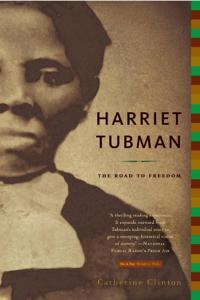
Want to learn the ideas in Harriet Tubman better than ever? Read the world’s #1 book summary of Harriet Tubman by Catherine Clinton here.
Read a brief 1-Page Summary or watch video summaries curated by our expert team. Note: this book guide is not affiliated with or endorsed by the publisher or author, and we always encourage you to purchase and read the full book.
Video Summaries of Harriet Tubman
We’ve scoured the Internet for the very best videos on Harriet Tubman, from high-quality videos summaries to interviews or commentary by Catherine Clinton.
1-Page Summary of Harriet Tubman
Overview
Bedtime Biographies are best when listened to. Check out the audio version of this book, which is read by the author! Araminta Ross was born into slavery and later escaped from it with her family. She changed her name to Harriet Tubman and became a leading abolitionist who fought for freedom during Civil War times.
If you would like to learn more about the life of a nineteenth-century American woman who was very heroic, then sit back and relax. Close your eyes as you try to imagine what it must have been like in 1825.
Harriet Tubman claimed she was born in 1825. However, her birth year is uncertain because people who were born into slavery had no way of recording their date of birth. We do know that she was born in Maryland, though.
Maryland’s Eastern Shore was a beautiful area in the early 1800s. There were many natural resources, such as water and wildlife. The land was also full of greenery that had rivers and creeks on it. Waterbirds were abundant, too. Some of these birds included geese, ducks, and more. It is here where Araminta Ross was born to a family who owned slaves; she later became one herself when she married John Ross in 1812.
Araminta’s parents were Benjamin Ross and Harriet Green. They had at least ten other children, but the exact number is unknown. For her white owners in Maryland, it must have seemed like a paradise because of its abundance and beauty. However, for Araminta and her family who were enslaved by them, it was a living hell.
Araminta’s family was always at risk of being separated. This happened to two of her sisters, who were sold while she was a child.
Luckily, Araminta wasn’t sold. But at the age of five, she was sent off to take care of a neighbor’s son while his mother went out.
Araminta was unhappy and abused. She would get whipped whenever the baby cried, leaving scars on her back for the rest of her life.
Araminta had a difficult childhood. She was sent to live with different families who didn’t take care of her properly.
Araminta worked in the fields when she was 12. She preferred that job to working inside, because she didn’t want to be abused by her masters like Miss Susan. The fieldwork also made her stronger and able to lift heavy barrels of flour onto carts.
The work Araminta did came with its own risks. One day, one of the people enslaved by her master tried to escape and was almost killed. The overseer threw a lead weight at him but missed and hit Araminta instead. She nearly died from that injury.
She was injured, and the injury caused lasting effects. She would experience blackouts throughout her life. It’s probable that she had a neurological disorder similar to narcolepsy.
However, she still worked in the fields. And slowly, she regained her strength.
Big Idea #1: Chapter 2
Araminta was born into slavery. She fell in love with a free black man named John Tubman and they got married, but all their children were slaves as well. Her faith in God motivated her to work hard for Him, so she started working on the plantation of Edward Brodas. However, she found out that there was a law that allowed slave owners to sell their slaves if they had been injured or disabled during the course of their enslavement. Araminta’s injury prevented her from doing many things that would have made her valuable to Brodas; he sold her away to another plantation owner named Thomas Auld who beat his slaves mercilessly and kept them hungry most of the time.
The document stated that once Rit was 45 years old, she and her offspring would be freed. Since she had already passed the age of 45, Araminta should have been free a long time ago. However, her previous owner broke the agreement by not freeing them at the stipulated age.





